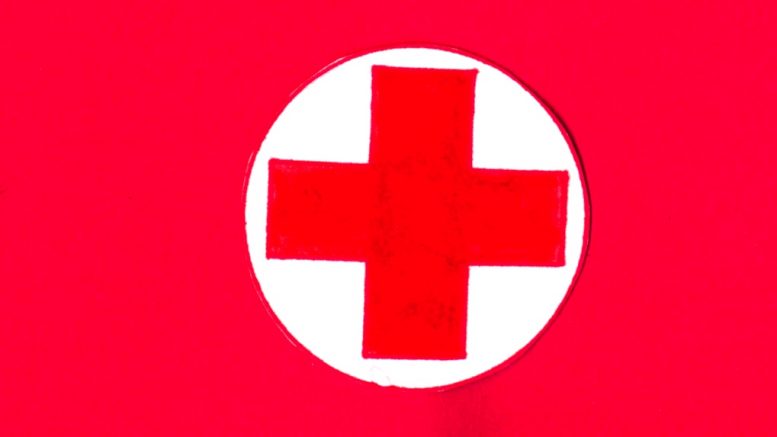
By Megan Day
Jacobin Magazine
The standard case for a single-payer health insurance system is pretty well known. Anyone can get care without courting financial ruin. Monumental personal decisions, like when to have a child or whether to leave or take a job, no longer hinge on the whims of an employer or the dysfunctions of the private insurance market. Surprise hospital bills, endless phone calls with insurance companies, juggling premiums, copays, and deductibles — all will be things of the past.
The case against single-payer often boils down to a single word: rationing. When critics peddle scare stories about Canadian or British “waiting lists,” they’re trying to conjure images of scarcity and austerity — the social-democratic equivalent of Soviet bread lines.
The truth, of course, is that you only have to look around to see that health care in America is already rationed. Try finding an in-demand specialist willing to take your “bronze-tier” insurance plan, or paying for high-priced specialty prescriptions out of pocket. Health care rationing is a fact of life in this country.
But there’s another important point to be made about single-payer and “rationing”: in many places around the world, national health insurance not only isn’t austere — it’s downright luxurious.
A card up their sleeve
Americans, with our predatory health care system, can be easy to impress. The simple fact that the French can visit any health facility in the entire country, for example, seems astonishing. No provider is out of network, because there’s no such thing as a network. Instead, there’s a universal public insurance system that can’t turn applicants down, can’t terminate insurance, and almost never denies claims.
Forget rationing and waiting lists. Socialized medicine delivers comforts and convenience that Americans can only dream about.
In France there’s no such thing as a deductible: insurance kicks in from the first euro billed. Since there’s no need to hire people to rifle through reams of paperwork and make judgment calls about denying claims and refusing coverage — and because the system has no stockholders to pay dividends to — the French insurance system spends next to nothing on paperwork.
Prices for treatments are fixed, and cost the patient next to nothing. For Americans accustomed to the need to change doctors every time they change plans, change plans every time they change jobs, and navigate things like claims denials, unpredictable charges, and endless paperwork, it seems extravagant.
But the conveniences don’t stop there. Since French providers aren’t carved up into networks, the government is able to issue what’s called a carte vitale, or “life card,” to all legal residents over the age of 15. With the patient’s permission, the card contains centralized information on the patient’s every medical visit, treatment, prescription, surgery and so on, going back to 1998. (Children’s records are stored on a parent’s card).
The physician inserts the carte vitale into a card-reader and the patient’s medical records pop up on a screen. Not only does it help doctors offer informed care, but it makes billing simple and eliminates much of the nightmare of transferring medical records. The physician logs the treatments, hits a button, and then waits roughly three days to be paid.
When doctors go on house calls, they take a portable card-reader with them. That’s right — in France they make house calls. Patients can request one anytime by calling a round-the-clock national hotline. The visit costs just thirty-one euros.
Cradle to Grave
*****
Desperate Need For Healthcare Locks Americans In Dead-end Jobs – And Chokes Off Freedom & Creativity
By Jonathan R. Goodman
The Guardian (11/13/17)
Millions of Americans are stuck in what some economists call “job-lock” or the inability to leave employment because of the risk of losing health insurance. A 2001 paper from Princeton’s Center for Economic Policy Studies showed, for example, that self-employed people are 25% less likely to have health insurance than office workers.
Uncertainty surrounding the future of the Affordable Care Act (ACA), widely known as Obamacare, has left many people feeling too scared to risk leaving full-time employment to attempt something on their own. After several failed attempts to repeal the ACA, the current administration may, in its latest tax plan, get rid of the individual mandate that requires most Americans be insured.
The cost of job-lock may, however, be more damaging than keeping people glued to full-time work: America may be becoming a less creative place – and a less attractive place for creative people.
Patients with a rare type of leukemia, for example, can now live a nearly normal lifespan with Imatinib, a kind of targeted therapy. The catch, however, is the drug can cost uninsured patients in America upwards of $145,000 per year – while in India a 30-day supply costs about $400.
A high job-lock rate is repeatedly linked to fewer small businesses, despite the seemingly universal agreement that small business is the “backbone” of the American economy. And yet a 2009 study by the Center for Economic and Policy Research showed that the US has fewer manufacturing small businesses than almost any other country – and a self-employment rate of about 7%, compared with 13.8% in the UK and 26.4% in Italy.
But what about the people who don’t want office jobs at all? America is full of creative minds, from mathematicians to photographers and artistic baristas. Shouldn’t Americans also place some importance on their country’s cultural position in the world?
The relationship between health insurance and economic freedom may be one reason the House minority leader, Nancy Pelosi, touted in 2012 that the ACA would allow Americans to quit their jobs and become “whatever”.
Becoming “whatever” doesn’t, after all, include only small manufacturing businesses – it includes an accountant becoming a comedian, a full-time steel factory worker becoming a poet, a tax lawyer opening an arts studio.
While the ACA’s effects on job-lock are not yet clear, the uncertainty of healthcare reform – coupled with the possibility that pre-existing conditions will be held against people by insurers – has left many people previously considering leaving salaried employment feeling trapped. …

